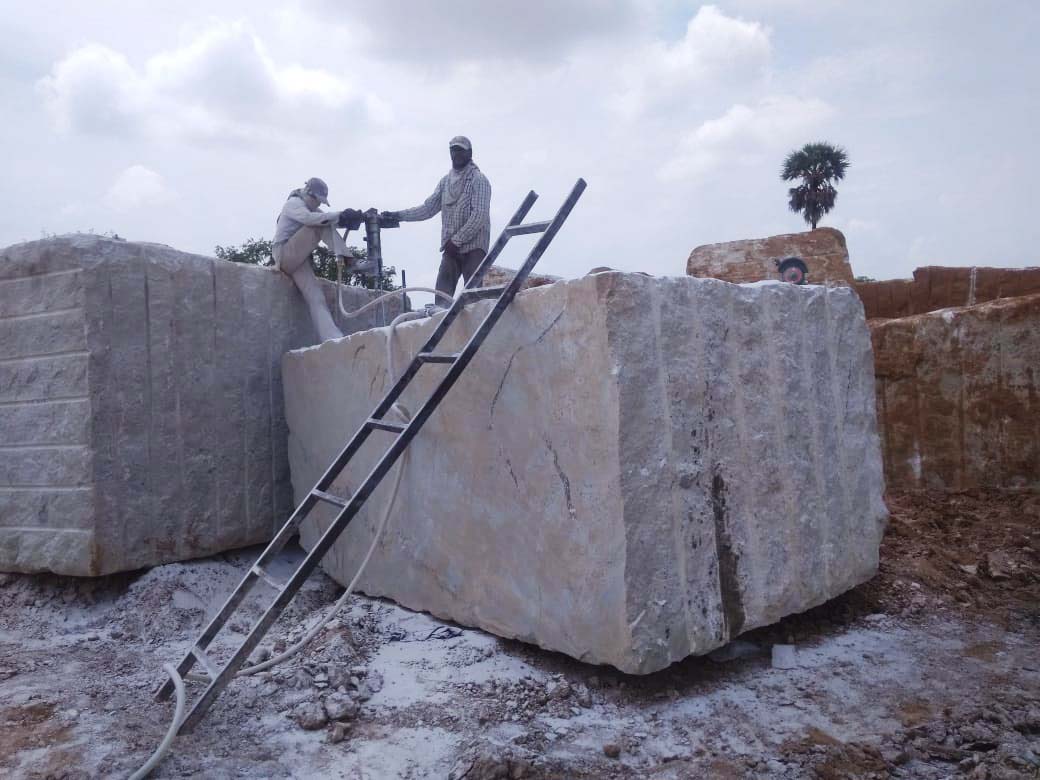Discovering the Rich Background and Sustainable Practices of Granite Quarrying
As we stand on the precipice of revealing the complex tapestry of granite quarrying, a trip via time exposes not just the physical act of removing rock however also the cultural and historic value woven right into the very fabric of this technique. From the ancient origins that laid the structure for modern quarrying methods to the sustainable methods that are forming the future of this industry, each sculpt mark on granite surface areas narrates waiting to be unearthed (granite quarries in south africa). The tradition of granite quarrying extends much beyond plain removal; it is a testimony to human resourcefulness, resilience, and the enduring appeal of this impressive stone
Old Beginnings of Granite Quarrying
Dating back to ancient worlds, the practice of quarrying granite has actually been an integral part of human background and building advancement. The earliest proof of granite quarrying dates back to ancient Egypt, where enormous pyramids and detailed sculptures were crafted from this sturdy rock. The Egyptians made use of primitive devices to draw out granite blocks from quarries, showcasing the importance of this material in their monumental constructions.
Moving on in history, the Greeks additionally made significant contributions to the quarrying of granite. The Greeks used granite in numerous building wonders, such as holy places and sculptures, demonstrating their skill in shaping and sculpting this sturdy stone. The Romans additionally fine-tuned the strategies of quarrying granite, employing advanced devices like knives and hammers to remove and form granite for their famous frameworks.
Via the centuries, the technique of quarrying granite has actually progressed, with contemporary technologies improving efficiency while preserving the ageless appeal of this all-natural rock - granite quarries in south africa. From old human beings to modern home builders, the tradition of granite quarrying remains to form our world
Advancement of Quarrying Strategies
The evolution of quarrying strategies has been noted by a constant development in the direction of higher effectiveness and precision in drawing out granite. From the simple methods used by our forefathers to the innovative innovations utilized in modern-day quarrying operations, the industry has undergone substantial improvements. Early quarrying techniques included manual labor with fundamental tools such as knives, hammers, and wedges to draw out granite blocks from the earth. As human beings advanced, techniques like fire-setting and primitive explosives were presented to help with the removal process.
Developments in computer-controlled devices and 3D modeling have enhanced quarrying operations, leading to very little ecological impact and boosted sustainability practices. As the need for granite continues to rise, the evolution of quarrying techniques stays integral to meeting industry needs effectively and sustainably.
Social Importance of Granite
Granite holds a profound cultural importance throughout different worlds due to its enduring existence in building work of arts and revered monuments. From the impressive pyramids of Egypt to the complex carvings of the Angkor Wat holy place in Cambodia, granite has been a material of option for sharing majesty and long life in social heritage. In ancient Rome, granite columns decorated temples and public structures, representing toughness and permanence. The social significance of granite their website prolongs beyond over at this website its physical features; it embodies resilience, security, and eternity, making it a symbol of sustaining legacies and customs.

Lasting Practices in Quarrying
In the middle of the rich history of granite quarrying and its social importance lies an expanding emphasis on sustainable techniques within the market. As ecological recognition and issues about source exhaustion have actually increased internationally, the quarrying industry has actually significantly accepted lasting techniques to minimize its influence on the atmosphere and surrounding neighborhoods.

Moreover, recovery and recovery of quarry sites post-extraction are important to lasting techniques. By recovering quarried areas to a natural or helpful state, such as producing wild animals environments or entertainment areas, quarriers can counter the ecological impact of their procedures and contribute positively to the neighborhood ecosystem.
Heritage of Granite Quarrying
With a historic backdrop steeped in workmanship and commercial development, what enduring influence has granite quarrying left on the landscape of modern-day society? The legacy of granite quarrying goes beyond plain extraction practices; it has actually formed architectural wonders, metropolitan landscapes, and cultural heritage worldwide. The resilient nature of granite has actually made it a recommended selection for monoliths, structures, and facilities, standing as a testimony to the ability and artistry of quarry workers throughout generations.
Moreover, the economic footprint of granite quarrying can not be forgotten. The industry remains to give employment possibilities and drive neighborhood economic situations in regions where granite removal is prevalent. It has likewise spurred technological developments in quarrying methods and devices, bring about much more reliable and sustainable practices.
In regards to sustainability, the tradition of granite quarrying includes efforts to mitigate ecological impacts with linked here reclamation tasks and accountable source administration. By stabilizing economic interests with ecological stewardship, the industry aims to ensure that future generations can proceed to take advantage of this long-lasting natural deposit.
Conclusion
